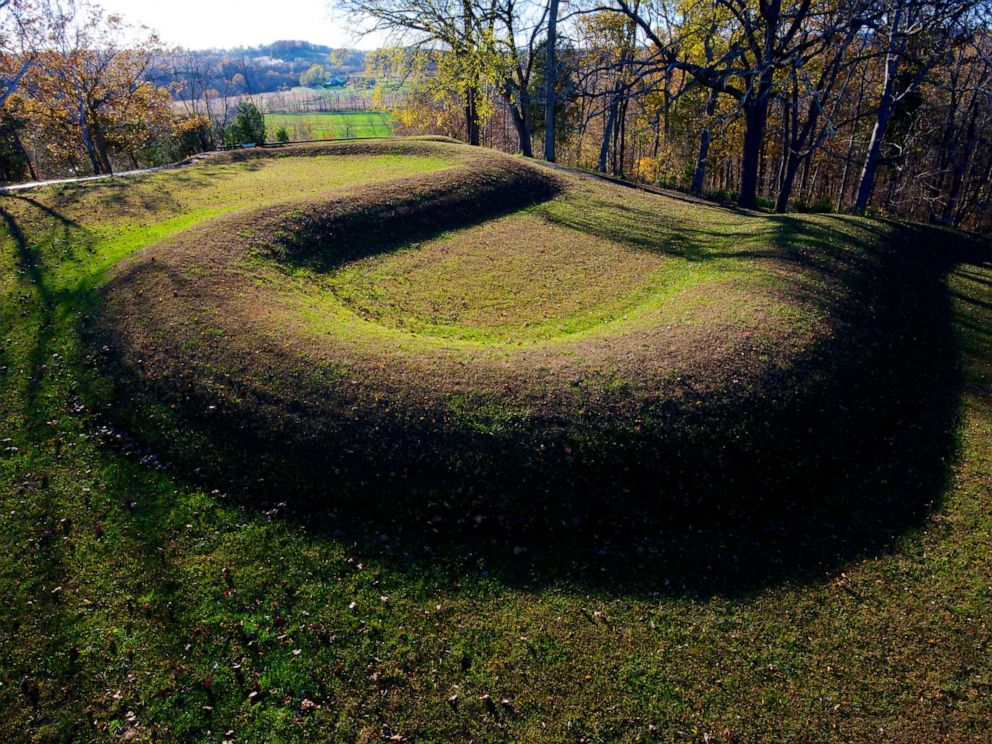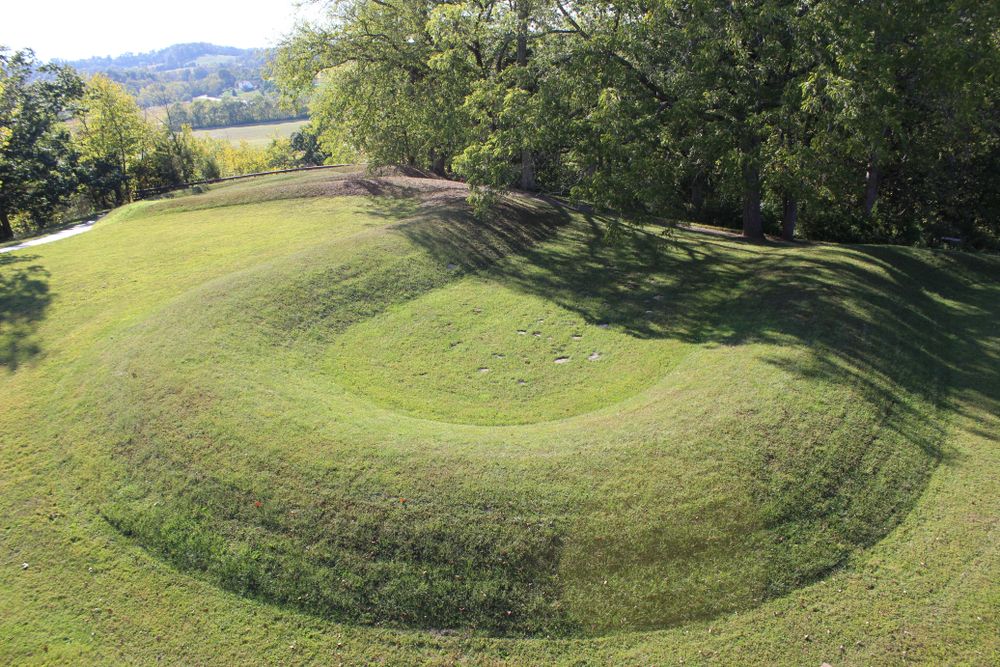
Echoes in the Earth: Unearthing the Cosmic Legacy of Ohio’s Ancient Effigy Structures and Alignments
In the verdant heartland of Ohio, where rolling hills meet fertile plains, lie monumental testaments to an ancient and sophisticated civilization. Etched into the very fabric of the landscape are vast earthworks – geometric enclosures, ceremonial mounds, and serpentine effigies – that whisper tales of cosmological understanding, profound spiritual beliefs, and remarkable engineering prowess. These are the legacies of the Adena and Hopewell cultures, often collectively, if somewhat inaccurately, referred to as the "Mound Builders," whose intricate structures and precise alignments continue to confound and inspire archaeologists and visitors alike.
For centuries, these enigmatic earthworks were shrouded in colonial mystery, their creators often dismissed or attributed to mythical races. However, modern archaeology, coupled with a growing respect for Indigenous histories, has peeled back the layers of misconception, revealing a vibrant and complex pre-Columbian society that flourished in the Ohio Valley for over a thousand years, roughly from 800 BCE to 500 CE. Far from being primitive, these cultures developed elaborate trade networks, produced exquisite artistry, and, most astonishingly, sculpted the earth itself into colossal observatories and sacred spaces.
The true marvel of these ancient Ohio Valley effigy structures and alignments lies not just in their sheer scale, but in their breathtaking precision and the profound intentionality embedded within their design. These weren’t simple dirt piles; they were sophisticated architectural and astronomical instruments, etched into the very fabric of the landscape to mirror the celestial dance above.
Serpent Mound: The Coiled Enigma
Perhaps the most iconic and visually arresting of these ancient effigies is the Great Serpent Mound in Adams County, Ohio. Stretching over 1,348 feet (411 meters) along a plateau overlooking Brush Creek, this colossal effigy depicts a serpent uncoiling, its head aligned with the summer solstice sunset, and its tail pointing towards the winter solstice sunrise. The serpent’s head, with an oval "egg" or "eye" feature, also aligns with the equinox sunrises.

The sheer audacity of its design, built without the aid of modern surveying tools, is staggering. The serpent’s body winds through seven coils, subtly conforming to the natural topography of the land. Its builders, likely of the Fort Ancient culture (though some attribute it to the earlier Adena), transformed a geological feature into a living, breathing symbol of cosmic significance. The serpent, a powerful symbol in many Indigenous cultures, often represents the underworld, creation, fertility, and renewal – a creature that bridges the terrestrial and the spiritual realms. Its alignment with key solar events suggests a deep understanding of celestial mechanics and a desire to integrate the earthly landscape with the rhythms of the cosmos.
As Dr. Bradley Lepper, curator of archaeology at the Ohio History Connection, notes, "Serpent Mound is a masterpiece of prehistoric landscape art, not just an effigy. It’s intimately connected to the sun, the moon, and the seasons, demonstrating a profound spiritual and astronomical knowledge."
The Newark Earthworks: A Cosmic Blueprint on Earth
While Serpent Mound captivates with its organic form, the Newark Earthworks in Licking County, Ohio, astonish with their geometric perfection and monumental scale. Constructed primarily by the Hopewell culture, these earthworks represent the largest set of geometric enclosures in the world. Originally spanning over four square miles, they consist of three main components: the Great Circle, the Octagon Earthworks, and the Wright Earthworks.
The Great Circle, enclosing approximately 50 acres within its perfect circular embankment, features a central mound known as Eagle Mound (though its original effigy form is largely lost). The Octagon, even larger, spans over 50 acres and connects to a perfect circle via a parallel-walled pathway. This entire complex functions as a remarkably precise lunar observatory.
Research by astronomer Ray Hively and archaeologist Robert Horn has demonstrated that the Octagon’s eight walls are aligned to the extreme northern and southern points of the moon’s 18.6-year cycle, known as the major lunar standstill. This alignment is not a coincidence but a deliberate and astonishing feat of engineering and astronomical observation. Imagine tracking the moon’s subtle shifts over nearly two decades, then meticulously laying out massive earthen walls to mark those precise points. This level of dedication speaks to the immense cultural and spiritual importance of the moon to the Hopewell people, likely tied to their calendar, agricultural cycles, and ceremonial practices.
The Newark Earthworks are not merely a collection of mounds; they are a sophisticated machine for understanding the universe, a vast temple where the terrestrial mirrored the celestial. The sheer labor involved in their construction – moving millions of cubic feet of earth with baskets and simple tools – suggests a highly organized society with a powerful communal vision and strong leadership.
Fort Ancient: Enigmatic Enclosure and Alignment
Further south, near Oregonia, lies the Fort Ancient Earthworks, another colossal Hopewell creation. Spanning over 100 acres and boasting nearly 3.5 miles of earthen walls ranging from 4 to 23 feet high, Fort Ancient is often mistakenly thought to be a defensive fortification due to its name and imposing scale. However, archaeological evidence suggests its primary purpose was ceremonial.

While not an effigy in the shape of an animal, its intricate design and subtle alignments reveal a similar connection to the cosmos. The precise placement of its gateways and the orientation of its walls suggest alignments with solar and lunar events, facilitating observations of solstices, equinoxes, and possibly other celestial phenomena. The site’s strategic location on a bluff overlooking the Little Miami River valley further emphasizes its significance as a sacred landscape, a place where people gathered for rituals, celebrations, and astronomical observations.
The Hopewell and Adena Legacy: Beyond the Earthworks
The cultures responsible for these incredible earthworks, the Adena (c. 800 BCE – 100 CE) and the Hopewell (c. 100 BCE – 500 CE), were complex societies with rich material cultures. They engaged in extensive trade networks, bringing exotic materials like obsidian from the Rocky Mountains, copper from the Great Lakes, mica from the Appalachians, and seashells from the Gulf Coast into Ohio. These materials were transformed into exquisite artifacts – intricate effigy pipes, delicate cut-out mica figures, copper ornaments, and elaborate pottery – often found buried in burial mounds, suggesting a sophisticated belief system surrounding death and the afterlife.
The earthworks themselves served multiple functions: they were centers for religious ceremonies, communal gatherings, trade, and perhaps even places of pilgrimage. Their alignments were not just scientific; they were deeply spiritual, connecting the people to their ancestors, their deities, and the fundamental rhythms of the universe. The act of building these massive structures was itself a powerful communal ritual, reinforcing social cohesion and shared identity.
Modern Significance and Preservation
Today, these ancient effigy structures and alignments stand as invaluable links to a profound human past. Their recognition has grown significantly, culminating in the recent inscription of eight major Hopewell ceremonial earthworks, including Newark and Fort Ancient, as a UNESCO World Heritage site in 2023. This designation acknowledges their "outstanding universal value" and ensures their protection on a global scale.
However, the journey to understanding and preserving these sites is ongoing. Many earthworks have been lost to agriculture and urban development over the centuries. Those that remain face challenges from erosion, invasive species, and the pressures of modern life. Moreover, the narrative surrounding these sites is continually evolving, moving away from colonial interpretations of "mystery" towards a more nuanced understanding rooted in Indigenous knowledge and archaeological research.
As contemporary Indigenous voices remind us, these sites are not merely archaeological curiosities but sacred places, ancestral homelands, and living cultural landscapes. They are vital expressions of identity, spirituality, and continuity for Native American peoples today, serving as powerful reminders of the resilience and ingenuity of their ancestors.
The ancient Ohio Valley effigy structures and alignments offer us a profound glimpse into a world where the earth was a canvas, the sky a sacred text, and human endeavor could move mountains to connect the two. They challenge us to reconsider our notions of "primitive" and "advanced," revealing a sophisticated understanding of the cosmos and a deep reverence for the natural world that resonates powerfully in our own time. As we stand before these monumental creations, we are invited to listen to the echoes in the earth, to ponder the wisdom of those who built them, and to ensure their stories continue to inspire generations to come.